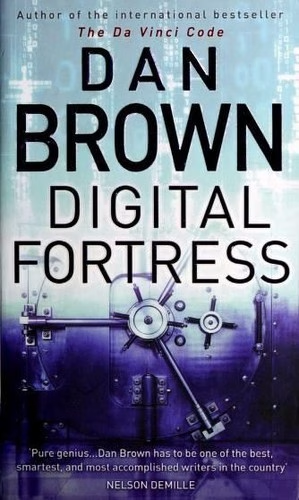Plot Summary:
The Discovery
In the high Arctic, a NASA satellite known as the Polar Orbiting Density Scanner (PODS) discovers an astonishingly dense object buried deep within the Milne Ice Shelf. Initial analysis suggests it is a meteorite of extraordinary size. This discovery comes at a critical time for the embattled U.S. President, Zachary Herney, whose support for the beleaguered and costly space agency has made him vulnerable in his re-election campaign. His challenger, Senator Sedgewick Sexton, has built his entire platform on criticizing NASA’s exorbitant spending and series of recent failures. A major NASA triumph could salvage both the agency and Herney’s presidency.
When a NASA team drills core samples, they make a discovery that transcends politics: the meteorite contains the fossilized remains of an insect-like creature. It is irrefutable proof of extraterrestrial life. Aware of the monumental political and scientific implications, and wary of potential skepticism, President Herney decides the discovery must be verified by independent sources before it is announced to the world.
The Verification Team
The President assembles a small team of civilian experts to secretly fly to the Arctic and authenticate the find. This team includes the charismatic oceanographer and TV personality Michael Tolland, renowned astrophysicist Corky Marlinson, formidable glaciologist Norah Mangor, and paleontologist Wailee Ming. To provide his own layer of independent verification, the President also dispatches Rachel Sexton, an intelligence analyst for the National Reconnaissance Office (NRO) and, in a move of political savvy, the estranged daughter of his rival, Senator Sexton.
Upon arrival at NASA’s secret research habitat on the ice shelf, Rachel and the scientists are presented with overwhelming evidence. The meteorite’s fusion crust, its internal structures known as chondrules, and its unique nickel content all point to an extraterrestrial origin. Most compellingly, the fossils are clearly visible and undeniably biological. The team, including the initially skeptical Rachel, confirms the discovery’s authenticity.
The Deception Uncovered
The initial euphoria of the discovery begins to fade as subtle anomalies emerge. During the meteorite’s extraction from the ice, Michael Tolland and Rachel discover bioluminescent plankton in the freshwater melt-pit—organisms that can only live in saltwater. This suggests a connection to the Arctic Ocean, which lies three hundred feet below the ice shelf.
Their suspicions aroused, the scientists conduct a Ground Penetrating Radar (GPR) scan of the extraction site. The results are shocking: the scan reveals a perfectly drilled tunnel extending from the ocean floor up to the cavity where the meteorite was found. The meteorite was not buried by three hundred years of snowfall; it was recently and artificially planted in the ice. The monumental discovery is, in fact, an elaborate fraud. Before they can alert the President, who is hours away from a global press conference, the team is ambushed by a U.S. Delta Force unit equipped with advanced weaponry.
The Attack and Escape
In the ensuing attack, paleontologist Wailee Ming and glaciologist Norah Mangor are killed. Rachel, Tolland, and Corky manage a desperate escape. Using a weather balloon as a makeshift sail, they are dragged across the ice shelf by the powerful katabatic winds and launched over a cliff.
They survive the fall by landing on a large, breaking slab of the ice shelf. Just as their iceberg floats out to sea and hypothermia begins to set in, they are rescued by the USS Charlotte, a nuclear submarine that had been secretly monitoring unusual activity in the region. Aboard the sub, they learn that President Herney’s press conference has already begun. Rachel’s frantic attempts to warn the White House are intercepted and dismissed by Marjorie Tench, the President’s senior adviser, who accuses her of political sabotage.
Unraveling the Conspiracy
Aboard a military jet flying them back to Washington, Rachel, Tolland, and Corky work to piece together the truth. They deduce that the “meteorite” is actually a rock from one of the deepest parts of Earth’s ocean, the Mariana Trench, where extreme pressures can create features that mimic meteoric chondrules. They also identify the “alien” fossil as a species of giant, deep-sea isopod known as Bathynomous giganteus. The rock was likely charred using an advanced engine to create a fake fusion crust. The entire discovery was a brilliantly orchestrated hoax.
Meanwhile, in a parallel narrative in Washington D.C., Senator Sexton’s fiercely loyal assistant, Gabrielle Ashe, uncovers evidence that the Senator is accepting millions in illegal campaign donations from a consortium of private aerospace corporations. In exchange, Sexton has secretly promised to privatize NASA upon his election, which would allow these companies to exploit space for commercial profit.
The Mastermind Revealed
Fearing they are still being hunted, Rachel and her companions divert their jet to Tolland’s high-tech research vessel, the Goya, anchored off the coast of New Jersey. Their attackers, the same Delta Force team, track them there. In a violent confrontation aboard the ship, the mastermind of the entire plot is revealed to be William Pickering, the Director of the NRO and Rachel’s own boss.
Pickering confesses that he orchestrated the hoax to save NASA. He believed Senator Sexton’s plan to privatize the space agency posed a grave threat to national security, as it would dismantle the government’s control over cutting-edge aerospace technology and allow it to be sold to the highest bidder. Motivated by a fierce, if misguided, sense of patriotism—partially fueled by personal tragedy he links to NASA’s underfunding—Pickering took extreme measures to create a “NASA victory” so profound it would guarantee public support and secure President Herney’s re-election.
The final battle culminates during the eruption of a massive underwater volcano—a “megaplume”—that Tolland had been studying. The eruption destroys the Goya, killing Pickering and his Delta Force soldiers. Rachel, Tolland, and Corky are rescued at the last moment by the Coast Guard. In the end, Senator Sexton’s political career is destroyed when Gabrielle Ashe leaks evidence of his affair and illegal finances. President Herney, after publicly admitting he was duped by the fake meteorite, emerges with his integrity intact and his re-election virtually assured. Amidst the wreckage of the conspiracy, Rachel and Michael have forged a deep romantic and professional bond.
Characters:
Rachel Sexton
The protagonist of the novel, Rachel is a highly skilled intelligence analyst for the National Reconnaissance Office (NRO). She is intelligent, resourceful, and driven by a professional and personal commitment to uncovering the truth. Her relationship with her father, Senator Sedgewick Sexton, is deeply fractured due to his manipulative nature and the pain he caused her late mother. This estrangement makes her an ideal, unbiased verifier in the eyes of the President. Throughout the ordeal, she is forced to rely on her analytical skills, courage, and a newfound trust in her companions to survive and expose a conspiracy that reaches the highest levels of the intelligence community.
Michael Tolland
A celebrated oceanographer, marine biologist, and the charismatic host of a popular documentary series, Amazing Seas. Tolland is both a brilliant scientist and an effective public communicator. He is recruited by the President to lend credibility to the NASA discovery. He is brave, principled, and serves as Rachel’s primary ally and romantic interest. Still grieving the death of his wife, he is a man of depth and empathy. His vast knowledge of the ocean proves to be the key to unraveling the truth about the “meteorite.”
Senator Sedgewick Sexton
The primary antagonist of the political plotline, Senator Sexton is a charismatic, ambitious, and utterly ruthless politician challenging President Herney for the White House. He has built his campaign on a populist platform of fiscal responsibility, using NASA’s budget overruns and failures as his prime example of government waste. Beneath his polished public persona lies a corrupt individual who is engaging in illegal campaign financing and personal infidelities. He is manipulative and willing to sacrifice anything, including his own daughter’s well-being, for political gain.
President Zachary Herney
The incumbent President of the United States, Herney is portrayed as an honorable and decent leader. He is a passionate supporter of NASA and the pursuit of scientific knowledge, a stance that has made him politically vulnerable. He is a primary target of the deception, with the conspirators banking on his integrity and his support for NASA to make the fake discovery a political triumph that will secure his re-election. He is a man who values truth, even when admitting it comes at a great political cost.
William Pickering
The Director of the National Reconnaissance Office (NRO) and Rachel Sexton’s boss. Publicly, Pickering is the epitome of a stern, efficient, and patriotic intelligence chief, earning him the nickname “The Quaker.” In reality, he is the story’s ultimate villain and the mastermind behind the entire meteorite deception. Driven by a fanatical belief that privatizing NASA would be a catastrophic blow to U.S. national security, and haunted by a personal tragedy he blames on NASA’s underfunding, he orchestrates the grand deception and authorizes the subsequent murders to protect his secret.
Gabrielle Ashe
Senator Sexton’s young, beautiful, and highly intelligent personal assistant. Initially a fervent believer in Sexton’s political message, her journey is one of disillusionment as she discovers his deep-seated corruption. Her subplot in Washington D.C. provides a mirror to the main action, exploring themes of deception and betrayal within the political arena. Ultimately, her conscience and integrity compel her to act against the man she once admired.
Corky Marlinson
A brilliant and eccentric astrophysicist, Corky is another of the civilian scientists sent to verify the meteorite. He serves as a source of both scientific expertise and comic relief. His absolute conviction in the initial evidence makes him a perfect representation of the scientific community’s excitement. Despite his awkwardness, he proves to be courageous when faced with danger.
Core Themes:
Deception vs. Truth
This is the novel’s central theme, explored on multiple levels. The primary plot revolves around a massive scientific deception—a fake meteorite designed to reshape a presidential election and save a government agency. This is mirrored by the political deception in Washington, where Senator Sexton presents a false image to the public while engaging in illegal fundraising and affairs. The protagonists are engaged in a relentless quest for empirical, verifiable truth in a world where information is manipulated for power and personal gain. The book argues that while deception may offer short-term advantages, the truth is a powerful and ultimately irrepressible force.
The Intersection of Science and Politics
Deception Point delves deep into the often-corrupting influence of politics on scientific discovery. The plot is set in motion by a scientific finding that is immediately co-opted for political purposes. The “discovery” is fabricated to achieve a political outcome: saving President Herney’s administration and preventing NASA’s privatization. The narrative critiques how both politicians and government agencies can manipulate scientific data and public perception to serve their own agendas, blurring the line between objective fact and political expediency.
Public Good vs. Private Profit
A core ideological conflict in the book is the debate over the privatization of space exploration. Senator Sexton argues that a government-run NASA is inefficient and wasteful, and that the private sector could explore space more effectively and profitably. William Pickering, on the other hand, believes that turning space over to corporations would lead to the abandonment of pure science in favor of commercial ventures, and more dangerously, would compromise national security by allowing critical technology to fall into the hands of the highest bidder. His extreme actions are a radical, violent response to this fundamental debate about the role of government.
Trust and Betrayal
The narrative is driven by a series of betrayals that force the characters to constantly re-evaluate who they can trust. Rachel Sexton is betrayed by her trusted boss, William Pickering, who masterminds the conspiracy and attempts to have her killed. Gabrielle Ashe is betrayed by her mentor and idol, Senator Sexton, when she discovers his deep-seated corruption. President Herney is betrayed by one of his highest-ranking intelligence directors. The novel suggests that in the high-stakes worlds of politics and intelligence, trust is a rare and fragile commodity, and personal and professional loyalties are often tested and broken.
Plot devices:
The Ticking Clock
A classic element of the thriller genre, the narrative is propelled by a relentless sense of urgency. Initially, the protagonists are in a race against time to uncover the truth and expose the fraud before the President makes his live, worldwide announcement. After the attack, the ticking clock shifts to a desperate race for survival, as the characters must escape their pursuers, survive the harsh environment, and get their evidence to the right people before the conspirators can silence them permanently.
Misdirection
The novel masterfully employs misdirection to build suspense and conceal the identity of the true villain. The central conflict is initially framed as a political battle between President Herney and Senator Sexton. The reader is led to suspect that the deception might originate from a desperate NASA or a manipulative White House. The real architect of the plot, NRO Director William Pickering, is hidden in plain sight, presented as a trusted, patriotic authority figure and Rachel’s protector. This reveal in the final act forces a complete re-evaluation of the events and motives driving the story.
Parallel Narratives
The story’s structure alternates between two primary plotlines that run in parallel before converging. The main narrative follows Rachel Sexton and the scientists in the Arctic and on the high seas, an action-packed techno-thriller focused on scientific discovery and survival. The secondary narrative is a political thriller set in Washington D.C., following Gabrielle Ashe as she navigates the corridors of power and uncovers Senator Sexton’s corruption. This structure allows the novel to explore its central themes of deception from both a scientific and political angle, creating a richer, more complex story.
Technology as a Catalyst
As a techno-thriller, the plot is heavily reliant on cutting-edge, often classified, technology. The story is initiated by a NASA satellite (PODS), unraveled by Ground Penetrating Radar, and features a host of advanced hardware, including a nuclear submarine, high-tech submersibles, stealth helicopters, and experimental weapons. Technology in the novel is a double-edged sword: it is the tool used to create the grand deception, but it is also the means by which the protagonists are ultimately able to uncover the truth.





